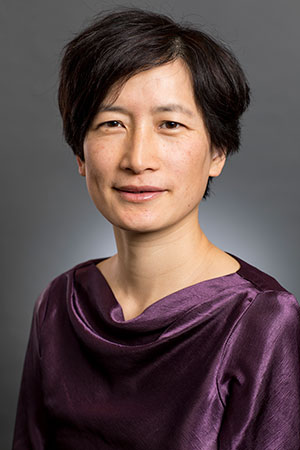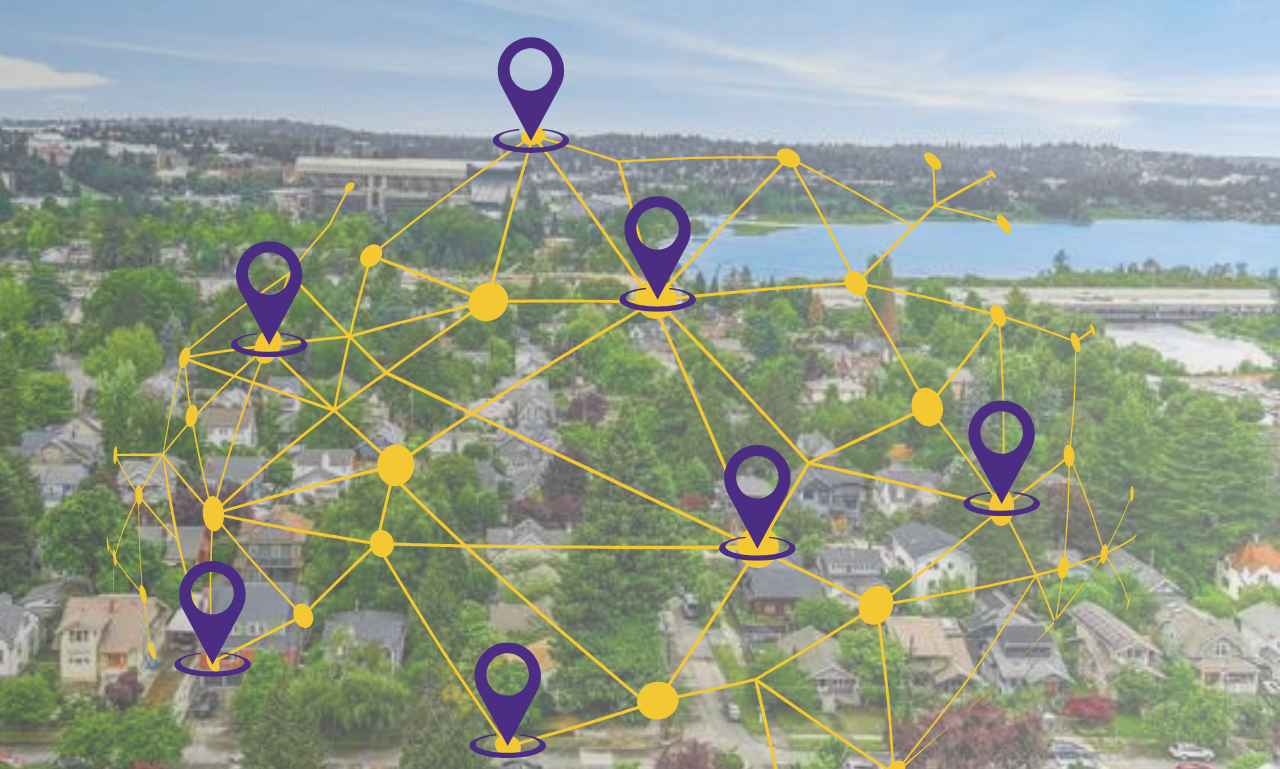Amy Sprague
January 16, 2024
“Our advantage of being an interdisciplinary project at the University of Washington is that we are drawing from an excellent corps of researchers with complementary expertise at a University whose mission includes working for the greater good across the state of Washington and has excellent ties into our communities.”

Professor and Interim Chair Cynthia Chen
Professor Cynthia Chen belongs, like many of us, to a lot of networks. As interim ISE chair, she is connected to our College of Engineering, the ISE department, discipline-specific professional groups, discord channels with students as well as her neighborhood swap board and other groups on Facebook, a text string with her college roommates and many other connections.
She asks, “In an emergency, could we leverage any of these networks to coordinate responses? And if so, how can we build out these networks as robustly as possible to prepare?”
Together with UW professors Dan Abramson from Urban Design and Planning, Kurtis Heimerl from Computer Science and Engineering, Tyler McCormick from Sociology and Statistics and ISE’s Shuai Huang, Professor Chen is leading an interdisciplinary $2 million National Science Foundation effort to examine this question of networks and stable power under emergencies, starting with two pilot communities in Washington state with cross-examination to communities in Japan facing similar risks of disaster.
Ad hoc survival to intentional network activation
The research team has cataloged people stepping up in crises. In pre-Uber New York in 2005, New Yorkers shared their own cars and boats during the transit strike that paralyzed public transportation. In 2016, neighbors in Rowland, North Carolina, used improvised rafts of inflatable mattresses to help each other escape Hurricane Matthew’s flooding. Innovation and heroism exist in pockets, but Chen and her team are looking to scale and streamline mobilization in emergencies in a four-part strategy.
Researchers will start with user research, conducting surveys to gather insights into pre-existing local sharing and social ties connecting people to their communities. The insights of how people are already sharing will inform how we might leverage these natural connections.
The second strategy will look to design and build robust off-grid community-based communications infrastructure to ensure connectivity even in the most challenging circumstances. Researchers must think about where to house key equipment for these communications and how to set up networking nodes for optimized coverage of neighbors.
The third strategy will look at how to mobilize the social ties and communications infrastructure above to develop best practices in emergency information and resource-sharing methods and mechanisms.
And finally, the researchers will co-design and pilot-test applications with two communities in Washington state, Laurelhurst in UW’s backyard and Westport on the Pacific Coast.
Chen says, “These two communities are good counterpoints to each other to deep dive into how they’re sharing and how we can make these networks more effective and stable. Laurelhurst is wealthy, fairly racially homogenous, and urban. Westport has a much lower median income, is fairly racially diverse and rural. Both communities face similar risks for earthquakes and coastal flooding or a tsunami.”
She continues, “We are looking forward to comparing the data we gather in each community and work with each on co-designing a system that can really make a difference for how these communities might face disaster to limit the loss of life.”

Conceptualization of overlayed networks on the Laurelhurst neighborhood.
Co-designing with communities
The project will engage community leaders and representative members at every stage, with the final piece being co-designing the communications system, which would include workflows in a disaster, location and maintenance of the infrastructure, a process to identify or recruit captains, and a training program. And the system must be sustainable into the future.
Chen knows the UW has unique strengths for this work, “Our advantage of being an interdisciplinary project at the University of Washington is that we are drawing from an excellent corps of researchers with complementary expertise at a University whose mission includes working for the greater good across the state of Washington and has excellent ties into our communities.”